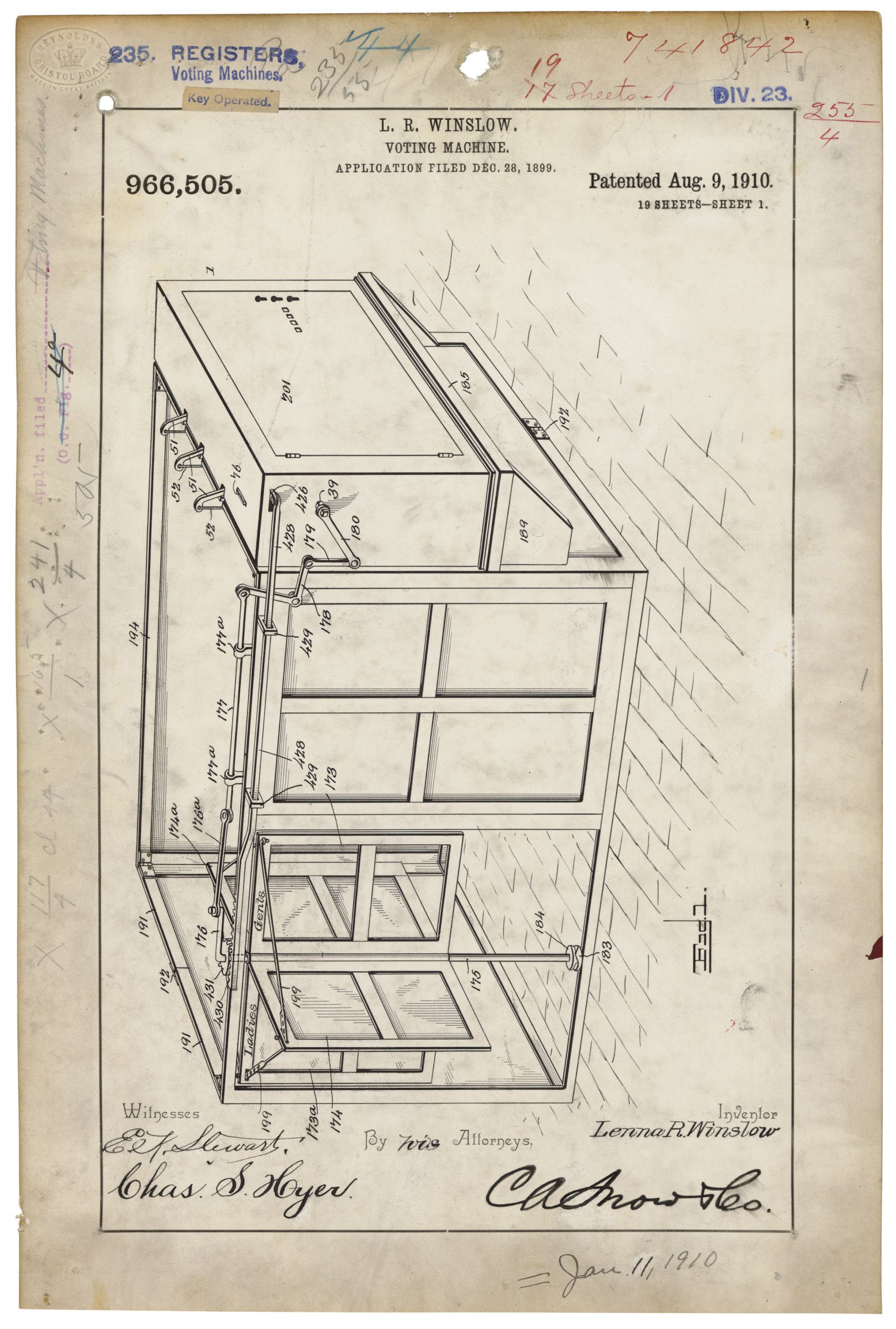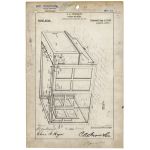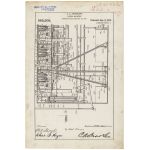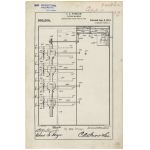Voting Machine Patent
8/10/1910
Add to Favorites:
Add all page(s) of this document to activity:

Add only page 1 to activity:
Add only page 2 to activity:
Add only page 3 to activity:
Instead of granting women full voting rights, some states, counties, and municipalities adopted "partial" or "limited" suffrage measures that enabled some women to vote in certain elections. Election officials in partial suffrage states then faced the challenge of providing different ballots for women and men.
Inventor Lenna Ryland Winslow wrote to the Patent Office that his "Voting Machine" would not only count votes, but would also contain a mechanism "automatically set to restrict certain classes of voters by and during their entrance to the booth." In short, the device, patented in 1910, would ensure that women would not be able to vote beyond what state law allowed them. It concealed ballot items that women could not vote on as they entered through the “Ladies” side of a turnstile.
States such as Kansas, in 1887, began to allow women the right to vote in municipal elections. In 1901, New York allowed women to vote on matters of local taxation. By 1914, the states of Arizona, California, Kansas, Montana, Nevada, Oregon, Washington and the territory of Alaska had all granted women voting rights equal to those of men. This locally idiosyncratic system of voter eligibility was the result of painstaking efforts in state-by-state campaigns for women's voting rights. These varying degrees of voting rights presented an opportunity and challenge for a number of ambitious American inventors of voting machines.
Inventor Lenna Ryland Winslow wrote to the Patent Office that his "Voting Machine" would not only count votes, but would also contain a mechanism "automatically set to restrict certain classes of voters by and during their entrance to the booth." In short, the device, patented in 1910, would ensure that women would not be able to vote beyond what state law allowed them. It concealed ballot items that women could not vote on as they entered through the “Ladies” side of a turnstile.
States such as Kansas, in 1887, began to allow women the right to vote in municipal elections. In 1901, New York allowed women to vote on matters of local taxation. By 1914, the states of Arizona, California, Kansas, Montana, Nevada, Oregon, Washington and the territory of Alaska had all granted women voting rights equal to those of men. This locally idiosyncratic system of voter eligibility was the result of painstaking efforts in state-by-state campaigns for women's voting rights. These varying degrees of voting rights presented an opportunity and challenge for a number of ambitious American inventors of voting machines.
After the 19th amendment in 1920, regular voters included both women and men.
Text adapted from “The Technology of Unequal Rights for Women: Patent Drawings of a Voting Machine” in the April 2008 National Council for the Social Studies (NCSS) publication Social Education.
Text adapted from “The Technology of Unequal Rights for Women: Patent Drawings of a Voting Machine” in the April 2008 National Council for the Social Studies (NCSS) publication Social Education.
This primary source comes from the Records of the Patent and Trademark Office.
National Archives Identifier: 5813569
Full Citation: Drawing of a Voting Machine; 8/10/1910; Utility Patent Number 966,505; Utility Patent Drawings, 1837 - 1911; Records of the Patent and Trademark Office, Record Group 241; National Archives at College Park, College Park, MD. [Online Version, https://www.docsteach.org/documents/document/voting-machine, April 25, 2024]Rights: Public Domain, Free of Known Copyright Restrictions. Learn more on our privacy and legal page.






